In a little house in Mount Maunganui, not far from the beach, lives a pianist, a potter, a journalist and maker Josh Ford Taylor. Josh’s parents’ place is just up the road — and that’s where he works, keeps all his equipment and has his kiln in the back garden.
So Josh, who were some of the people in your life who encouraged you to pursue a career as an artist? Early on at Mount Maunganui Primary School, I had some really great teachers who encouraged art and design. With one, Joanne Rye, we’d do a still-life drawing every morning, and I loved it.
Today, artist and potter Laurie Steer is a mentor to me. We met when I was finishing college and did the odd bit of part-time work for him. It was inspiring to see someone working as an artist, but I found it hard to see how I’d get there. Now, we often discuss how to be a creative person and make a living from it.
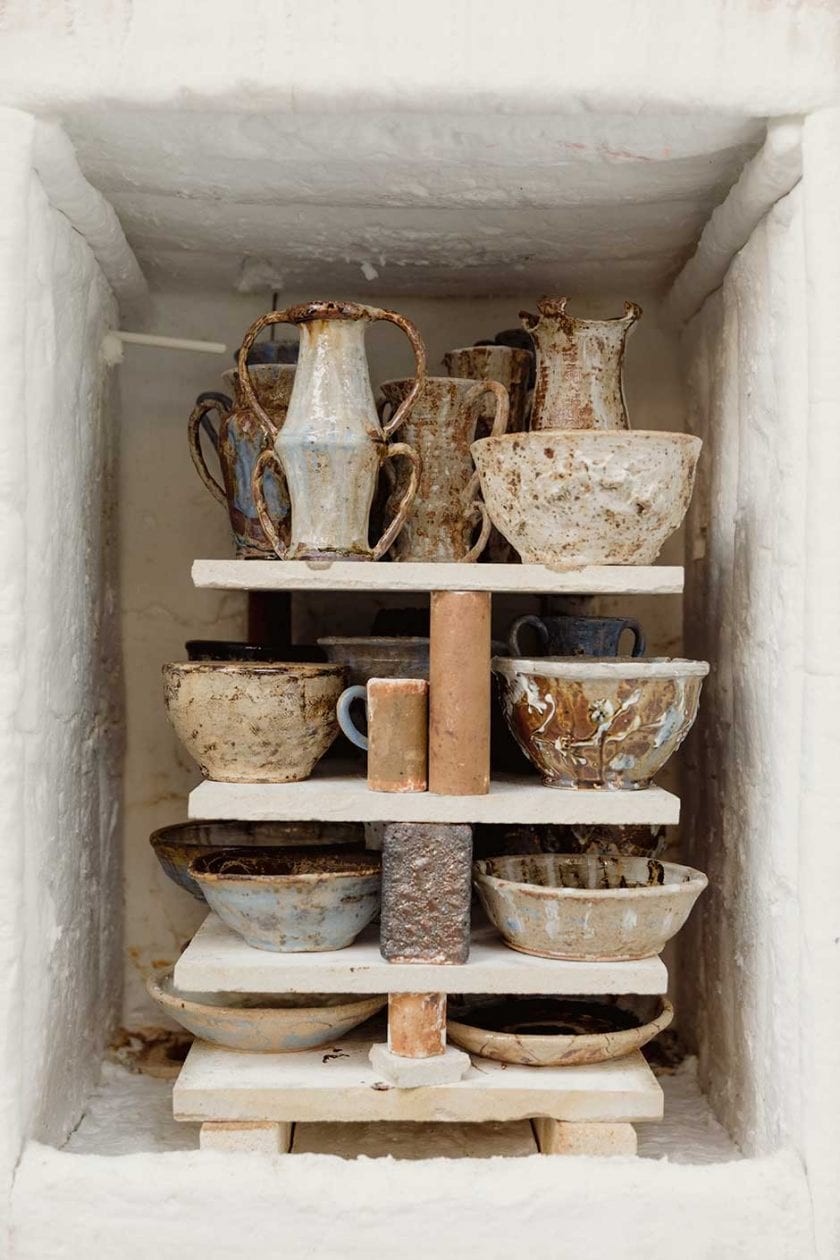

A fresh batch of finished pieces in the kiln (top), ready to be unstacked (above). An average day for morning-person Josh sees him arrive at his studio at around 8am, have coffee, turn on an album or radio station, then get into making stuff. “Each day is quite different, involving distinct parts of the process,” he says. “My dad often comes down to the studio and we chat about things, and he sometimes helps put the electrical parts of my lamps together when I’m busy. I leave around 5pm.”
What steps led you to turn making into a full-time gig? I started studying fine arts at Massey University in Wellington and did a couple of years, but I struggled with it and changed to the industrial design program. I wasn’t that into that either, but the workshop facilities were amazing, so I stuck at it and scraped by, trying to make the weirdest stuff the programme would allow — and then I failed my final paper. In retrospect, it was exactly what I needed. I drove home to Mount Maunganui in tears and got a landscaping job the next day.
A year later, I went to Driving Creek Pottery in the Coromandel for a month- long residency. Building things with clay made sense to me; I like it because you can approach it in different ways — you can be expressive and gestural but also measured and structured. I had a really good time and it reignited my passion for making stuff.
During last year’s Covid lockdown, I built a studio in my parents’ garage and released my first Ford’s Factory collection. I then went back to uni and completed my industrial design degree. Now I’m making stuff full-time.
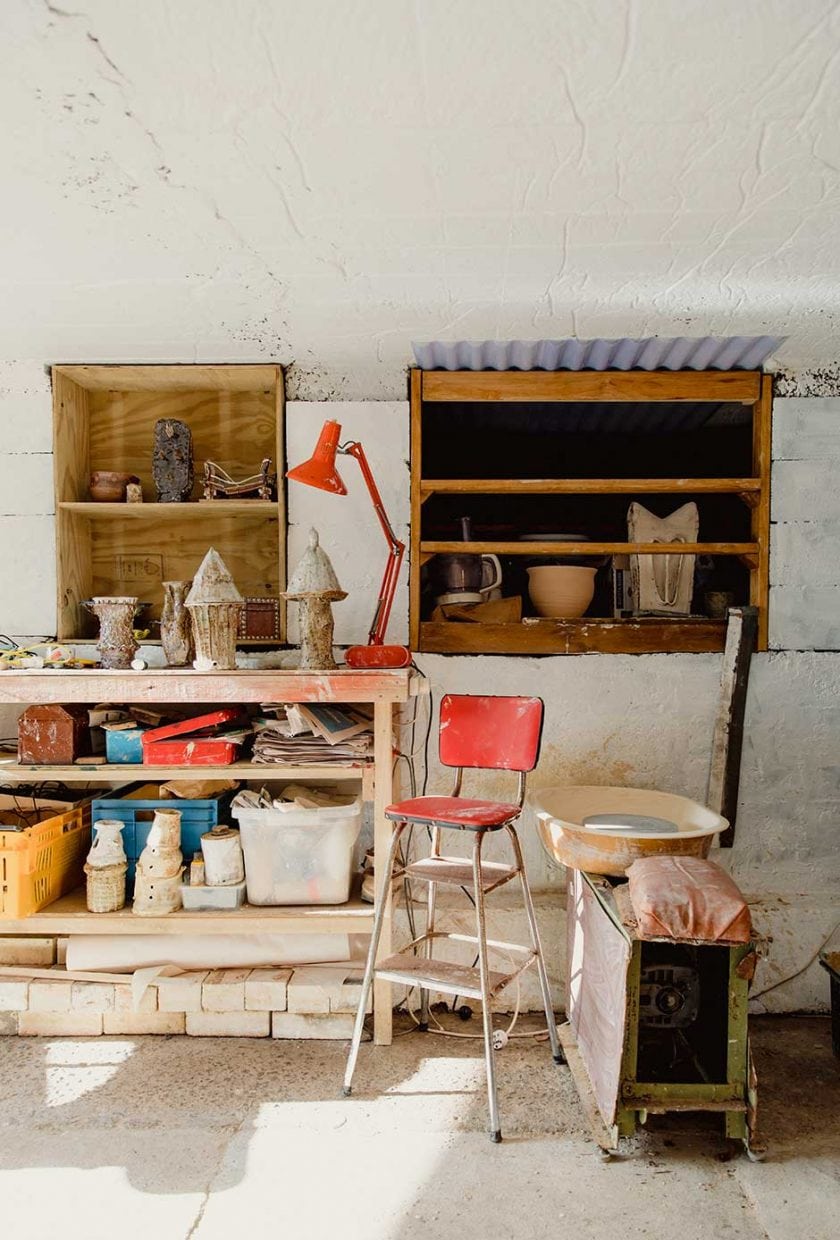
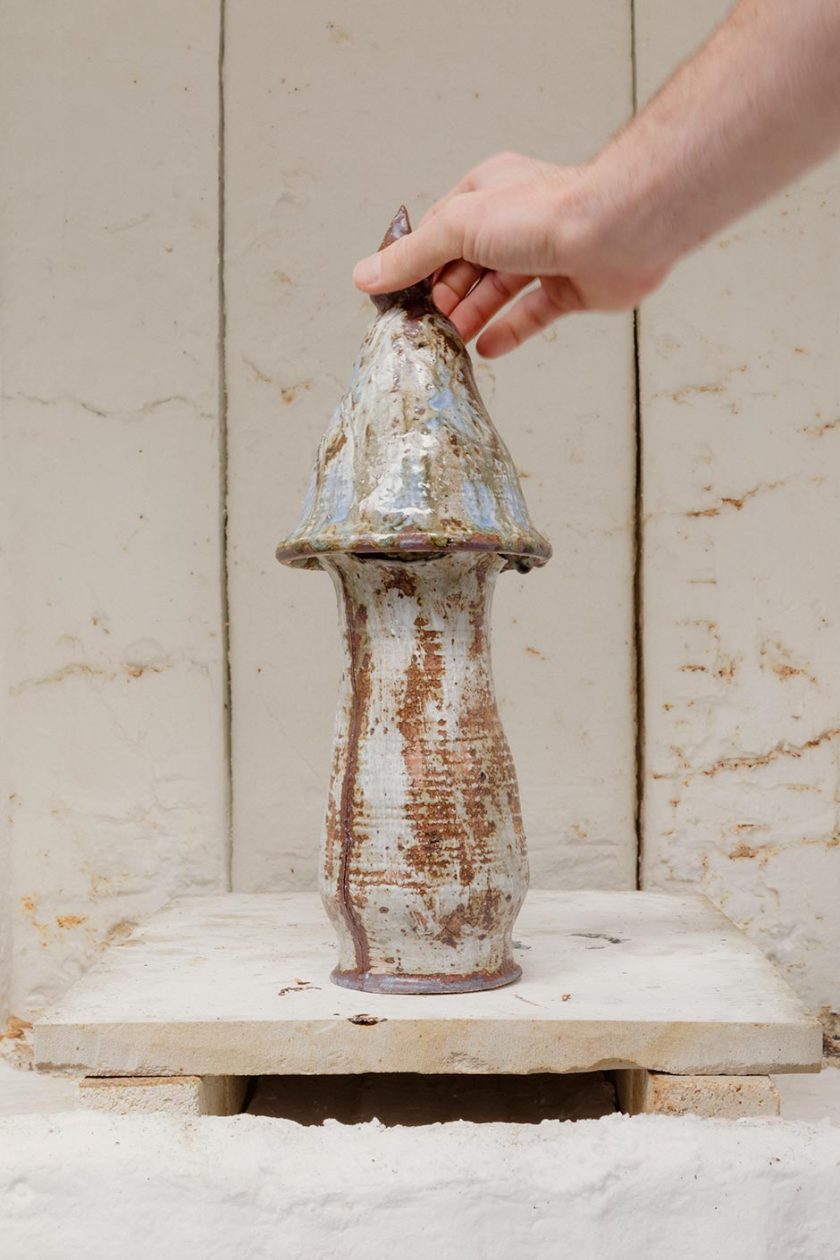
TOP A sunlit scene from Josh’s studio. At this bench, he works on fitting the electrical components to his lamps. Underneath is a stash of found lamp parts, glaze materials and some print-making equipment, and on the right of all this is the electric wheel he throws on. ABOVE Lamp A from Ford’s Factory’s winter collection.
What do you produce for your brand Ford’s Factory? I try to make useful things that have a purpose in a home beyond being looked at. So far, I’ve just been dealing with the ceramic medium, but I’m always on the lookout for new materials and methods to generate new ideas. I’m collecting equipment, including a loom and a knitting machine that I’ve been playing on. Jeweller Karl Fritsch lent me a mini kiln for casting metals, so I’ve been making some little pendant tags to go on my lamp cords, but the next step will be making wearable stuff.
Do environmental concerns come into your practice at all? Definitely. Clay is an abundant resource but you do need a lot of energy to turn it into ceramic, so in the future I’d be keen to switch from a gas kiln to an electric one that could be solar powered. I buy some of my clay, like porcelain, and also dig some of it. There’s quite a bit of clay in the Coromandel, which is handy. I collect pebbles and sand to add to it.
I guess an outcome of creating one-off, artisanal products is that you’re encouraging slower, more conscious consumption. When I’m packaging my work, I use only recyclable stuff — cardboard boxes I collect from the back of shops and old newspapers I get from the dairy.
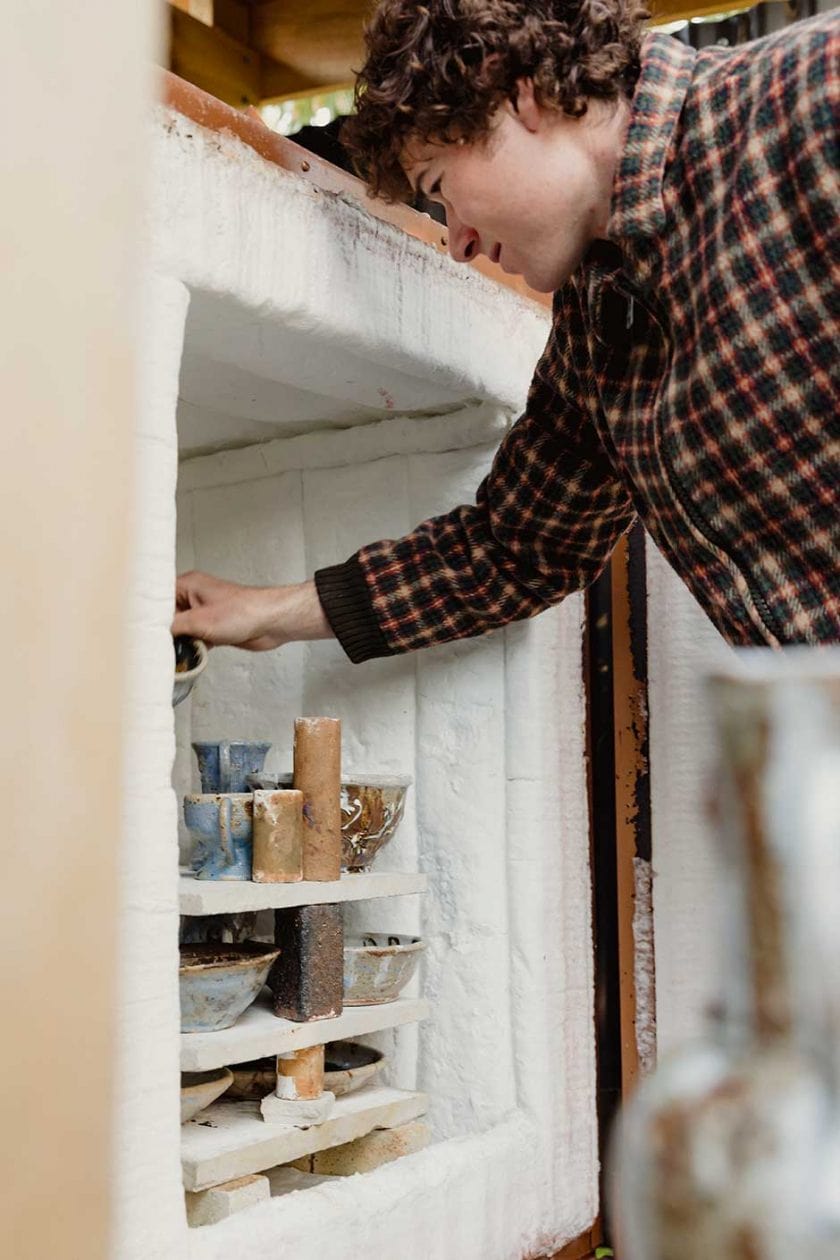
What does your making process involve? When making a pot, I often start by throwing parts on the wheel, cutting some up and rearranging them, then sticking them back together. From there, I attack the surface of the thing and apply coloured slips. Sometimes I use stamps. When it’s right, I’ll leave it to dry before bisque firing it until it’s hard enough that it won’t fall apart when I glaze it, but still porous so it absorbs the water out of the glaze. Then I fire it again. If the pot survives, it’s probably complete.
What part of that gives you the most satisfaction? The initial making of the object is the most exciting. Ideas take shape quickly, and the clay responds to touch immediately.
You assign interesting names to your pieces — how do you arrive at them? Names are another dimension to a work. I try to use them to lead the viewer away from making connections I don’t want them to make. I tend to like a sense of sincerity and optimism in a name. Some I’ll think about for ages; others arrive straight away.
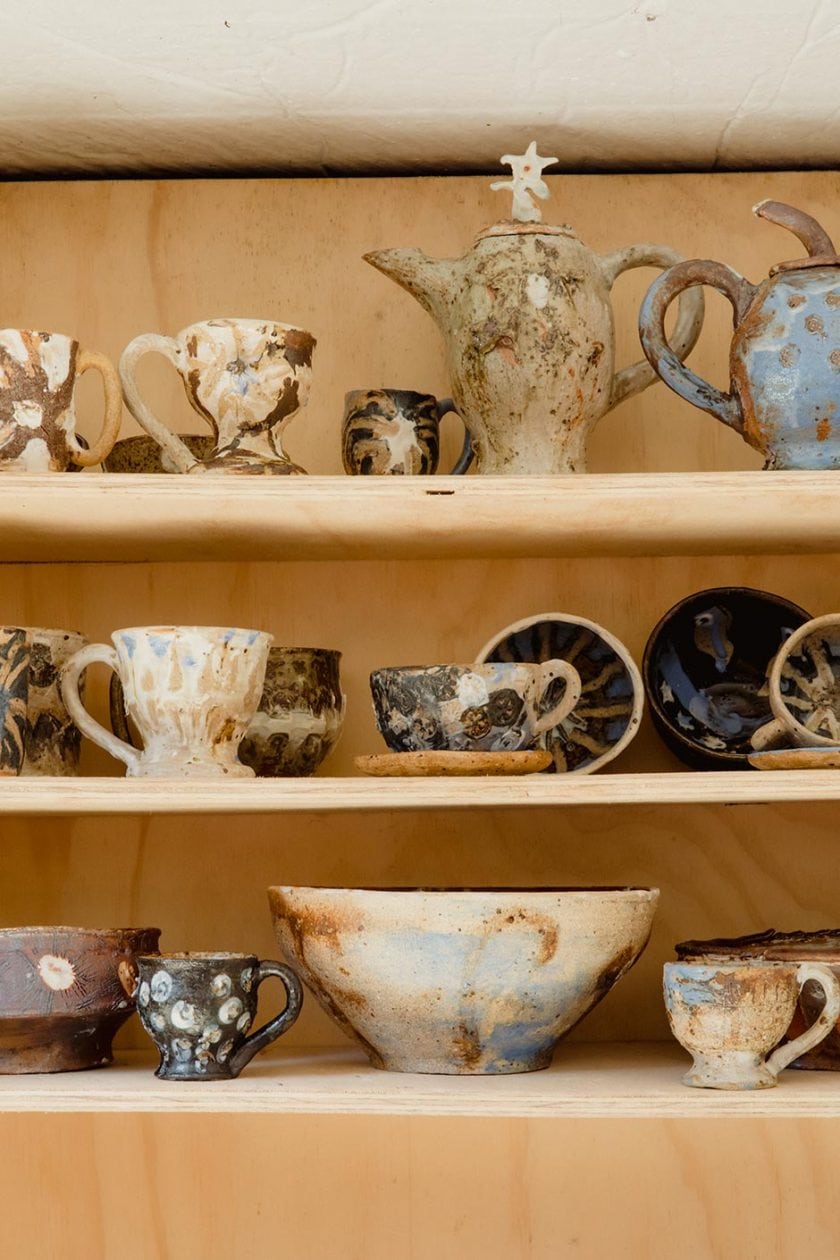
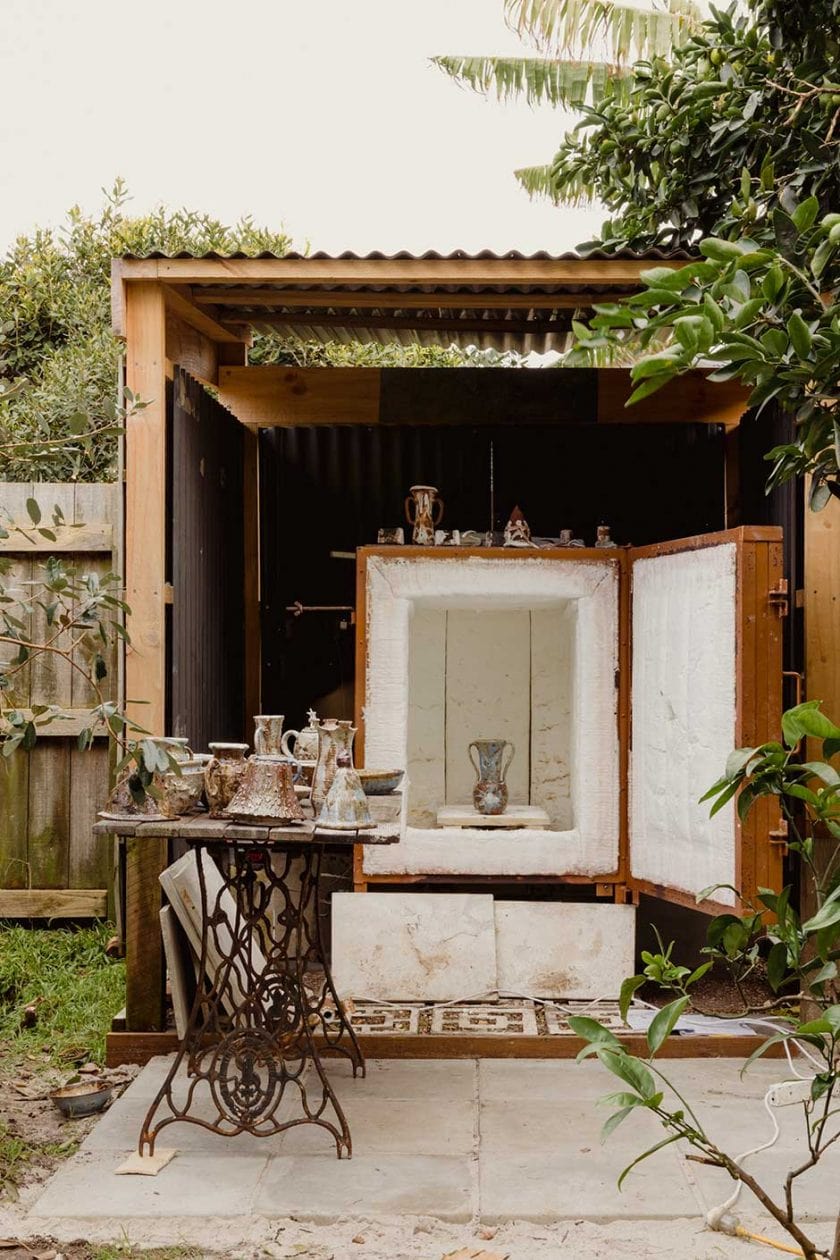
TOP Among these pieces displayed in the studio is a teapot called You Forget It’s Cold Outside The Palace (top shelf, middle). ABOVE Josh’s self-built workplace is slowly expanding — his next step is to extend the covered area so rain can’t blow onto the kiln.
You’re into surfing, skating and biking as well — do they help you switch off or give you space to come up with fresh ideas? When I’m surfing and skating, I completely switch off. Biking’s a bit different — it’s more similar to driving a car, which I find is great thinking time.
What’s the secret to staying an original thinker? I believe everyone’s an original thinker. The secret might be doing something with the original thought straight away.
Words
Photography
The post appeared first on .





























